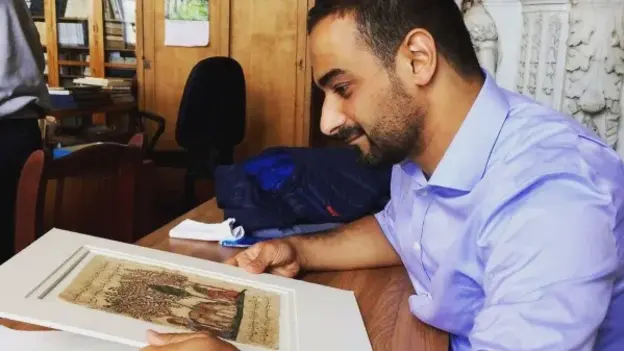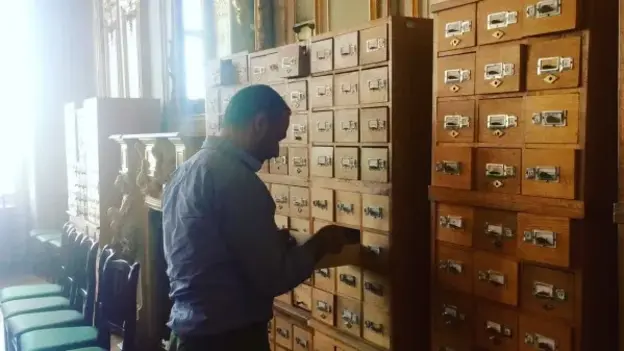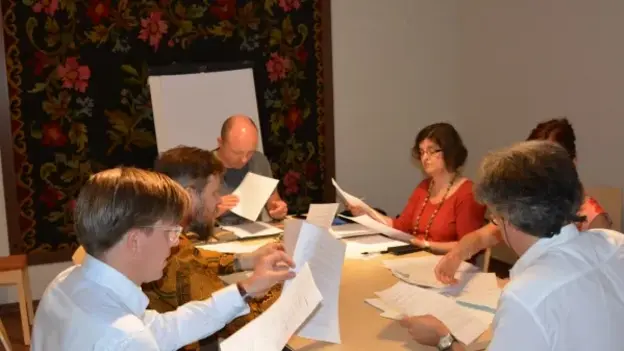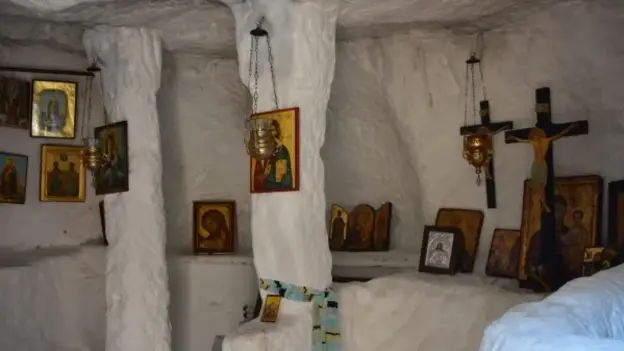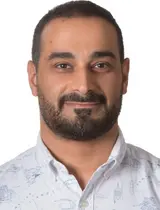Tandem Project
Workshop 'Buddha: The Story of a Christian-Muslim Saint'
Workshop
In July 2017, AGYA Members Bilal Orfali and Kirill Dmitriev brought together academics from different disciplines to discuss the peregrination of the biography of Gautama Buddha in time, space and imagination.
The Christian-Muslim Adaptation of the Buddha
Once upon a time there lived a prince. His father, the king, wanted him to succeed as ruler of the kingdom. But as astrologers predicted that the prince might turn to religion, the king shielded his son from religious teachings and from knowledge of human suffering. Despite being isolated and surrounded by luxury and pleasure, the prince finally learned the truth, became renunciant and in the end a great spiritual figure.
This narrative is recognizable to most Buddhists as a retelling of the life story of Gautama Buddha. Ultimately based on the life story of Buddha, the legend has traveled in time, space and language, providing the prototype for the Islamic story of Bilawhar wa-Budasif and the Christian legend of Barlaam and Josaphat. In the Christian legend, the prince is named Josaphat (or Josafat, Iosaf, Iodasaph). His virtue lies in converting his father’s kingdom to Christianity and living as a Christian ascetic with his teacher, Barlaam (or Barlam, Varlaam).
Tracing the Legend through Space
In their Tandem Project AGYA Members Bilal Orfali and Kirill Dmitriev got on a research journey to track the travel route of the sacred tale of these two saints: In Rome they studied several relevant (middle Persian and Arabic) manuscripts in the Vatican Library. In Moscow and Saint Petersburg they used the manuscript libraries and researched the liturgical and musical tradition of the story of Josafat and Barlam in its Slavonic transmission. Moreover they visited the Assumption Cathedral within the Kremlin Museum in Moscow to study icons and wall paintings of Varlaam and Iosaf there. They shared their results with other experts at a workshop in Meteora in Greece. There, they brought together scholars from the fields of philology, iranology and art history to look at the legend of Barlaam and Iodasaph on different textual, artistic, theological, performative and interpretive aspects.
The workshop venue was right below the famous monastery dedicated to Barlaam that rests on a monolithic rock pillar in the Greek mountains. The focus of the workshop lied on a comprehensive study of the Legend of Barlaam and Josaphat not merely as a text transmitted in various linguistic contexts, but as a phenomenon of cultural history crossing boundaries and transcending identities of multiple ethnic, religious, and artistic systems.
The workshop participants agreed that due to the missionary aspect of the text, describing mystical knowledge and the persecution of religious minorities, the legend was primarily appealing to marginalized faiths instead of dogmatic state religions. Therefore, the early Arabic and Christian versions were created in Ismaili Muslim Culture and in Muslim-ruled Georgia – and not, for example, in mainstream Sunni Islam.
The Search for the Oldest Text Source
In presentations and discussions, the experts approached the topic from different angles. While there is a rich history of oral transmissions of the legend of Barlaam throughout different cultural settings, the workshop concentrated on analyzing the written versions. Iranologist Andrea Piras (University of Bologna, Italy) opened the conversation by discussing his research of a stemma to trace the text’s versions trough time, analyzing the Manichaean transmission, a gnostic religion of the early Middle Ages. While he agreed that it had little direct influence on the later Arabic and Greek texts, he nevertheless stressed the value of the Central Asian life of the story more generally for understanding the missionary and didactic aspects of the text in later incarnations.
Alexey Muraviev (National Research University Higher School of Economics, Moscow) argued for the possibility of a Christianized Arabic predecessor to the Georgian version – a point that was controversial discussed by the other participants. Arabist Isabel Toral-Niehoff (Freie Universität Berlin, Germany) concentrated her work on the extant Arabic versions of the text in the search for the oldest Arabic source. She rejected orientalist Daniel Gimaret’s claim of his edition to resemble the oldest non-Christian, non-Muslim precursor of all other versions. She pointed out that the manuscripts upon which Gimaret based his text were primarily of the 19th century and stemmed from the Ismaili tradition in Bombay. While this does not rule out their preserving older elements of the text, it does make it less likely, particularly given the degree to which the text was changed by copyists in other versions. Toral-Niehoff summarized that we must conclude the picture is complicated and we do not presently have the oldest Arabic version in any definitive form’. Following Dr. Toral-Niehoff’s talk, the Christian Arabic version – clearly a translation of the Greek text – was discussed, observing the extremely high quality of language, in contrast to many other Christian Arabic religious texts.
Tracing the Legend through Art
Art historian Francesca Tagliatesta (Université Paris 3 Sorbonne Nouvelle, France) approached the story from a visual rather than textual perspective. She focused on the depiction of several episodes from the story in medieval Italian frescoes and mosaics, to see which versions of the story they are based on and how people understood these images in their respective epochs. For example, she examined the symbol of the “three living and three dead,” representing the worthlessness of the worldly life compared to enlightenment and afterlife, to demonstrate how an originally Buddhist story could spread with ease throughout Christendom.
Outlook: a Detailed Comparison of Texts
In a final round led by AGYA member Kirill Dmitriev, the workshop participants discussed how to integrate new perspectives into the traditionally philological discussion of the story. All participants agreed that an episode-by-episode comparison of the various versions, tracking the small changes of dialogue and plot, might reveal new information about the process of transformation across various versions of the story. AGYA member Bilal Orfali summarized: ‘The literary complex known as the Legend of Barlaam and Josaphat is a remarkable document of the history of contacts between civilizations. It mocked all boundaries and enjoyed a popularity attained perhaps by no other legend. Like all good stories, it has something to teach. We hope to continue our exploration in future workshops that tackle different aspects of the story from different angles, the aim is to learn about how similar we humans are, how different, but also why and how this happened.’
- Disciplines Involved
- Arabic & Islamic Studies, Religious Studies
- Venue
- Meteora, Greece
- Project Title
- Workshop 'Buddha: The Story of a Christian-Muslim Saint'
- Year
- 2017
- Funding Scheme
- Tandem Project
- Countries Involved
- Lebanon, United Kingdom
- AGYA Publication
- The Legend of Barlaam and Josaphat: Selected Readings
